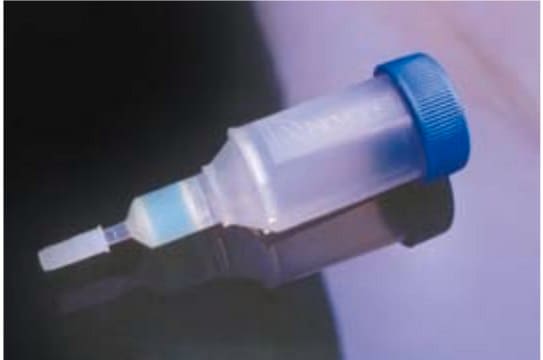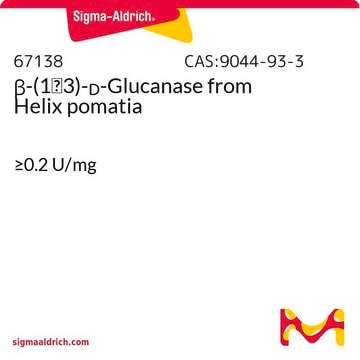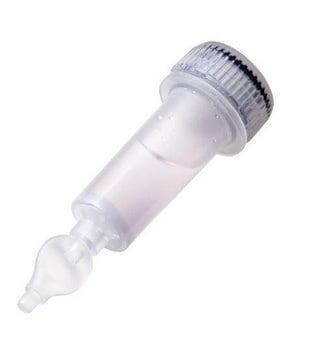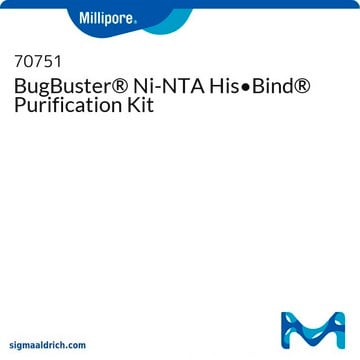Kluczowe dokumenty
H0537
HIS-Select® HF Nickel Affinity Gel
Synonim(y):
Żywica Ni-NTA HF
Wybierz wielkość
343,00 zł
Wybierz wielkość
About This Item
343,00 zł
Polecane produkty
Formularz
suspension
Poziom jakości
metody
affinity chromatography: suitable
Matryca
Highly cross-linked 6% Beaded Agarose
pojemność
15 mg/mL, gel binding capacity (protein)(with an approx. 30 kDa protein)
temp. przechowywania
2-8°C
Opis ogólny
Zastosowanie
Cechy i korzyści
- High selectivity for higher purity
- Unique non-charged hydrophilic linkage reduced non-specific binding
- Binding Capacity for histidine-tagged protein (His-tag protein) is greater than 15 mg/mL
- Highly cross-linked agarose matrix allows for purification under higher pressures
- Binding under denaturing or non-denaturing conditions
- One-step purification
Postać fizyczna
Uwaga dotycząca przygotowania
Informacje prawne
Hasło ostrzegawcze
Danger
Zwroty wskazujące rodzaj zagrożenia
Zwroty wskazujące środki ostrożności
Klasyfikacja zagrożeń
Acute Tox. 4 Oral - Aquatic Chronic 2 - Carc. 1A Inhalation - Flam. Liq. 3 - Muta. 2 - Repr. 1B - Resp. Sens. 1 - Skin Irrit. 2 - Skin Sens. 1 - STOT RE 1 - STOT SE 2
Organy docelowe
Eyes,Central nervous system, Respiratory Tract
Klasa zagrożenia wodnego (WGK)
WGK 3
Temperatura zapłonu (°F)
88.0 °F
Temperatura zapłonu (°C)
31.1 °C
Środki ochrony indywidualnej
Eyeshields, Faceshields, Gloves, type ABEK (EN14387) respirator filter
Wykazy regulacyjne
Wykazy regulacyjne dotyczą głównie produktów chemicznych. Można w nich podawać ograniczoną liczbę informacji na temat produktów niechemicznych. Brak wpisu oznacza, że żaden ze składników nie znajduje się w wykazie. Użytkownik odpowiada za zagwarantowanie bezpiecznego i zgodnego z prawem stosowania produktu.
EU REACH Annex XVII (Restriction List)
Wybierz jedną z najnowszych wersji:
Masz już ten produkt?
Dokumenty związane z niedawno zakupionymi produktami zostały zamieszczone w Bibliotece dokumentów.
Klienci oglądali również te produkty
Powiązane treści
Investigate in vitro protein-protein interactions with pull-down assays, utilizing affinity, GST pull-down, TAP, and co-immunoprecipitation methods.
Badanie interakcji białko-białko in vitro za pomocą testów pull-down, z wykorzystaniem metod powinowactwa, GST pull-down, TAP i koimmunoprecypitacji.
Active Filters
Nasz zespół naukowców ma doświadczenie we wszystkich obszarach badań, w tym w naukach przyrodniczych, materiałoznawstwie, syntezie chemicznej, chromatografii, analityce i wielu innych dziedzinach.
Skontaktuj się z zespołem ds. pomocy technicznej
















